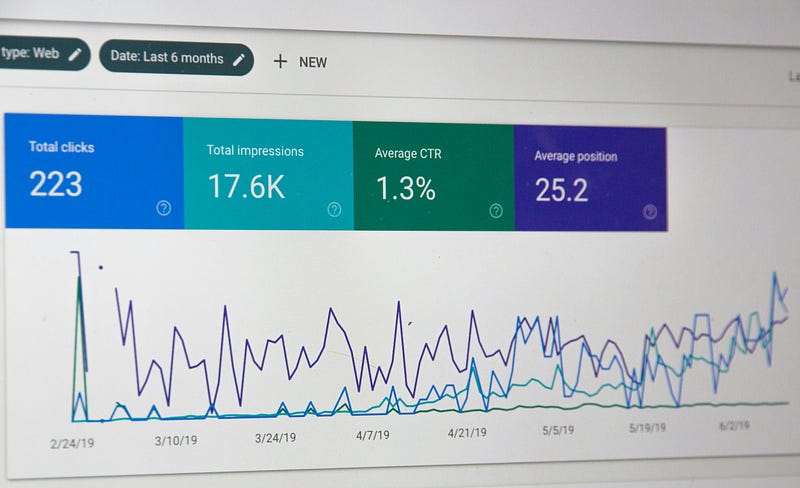
Introduction to Website Development
When stepping into the world of online presence, developing a website is a crucial first step for any business venture.
- Website development involves creating, designing, and maintaining a website to establish a digital footprint for a business.
- It encompasses various aspects such as web design, web content development, client-side/server-side scripting, and network security configuration.
- The development process typically includes planning, coding, testing, and launching the website to ensure functionality and user-friendliness.
- Effective website development focuses on creating a seamless user experience, optimizing performance and speed, and implementing responsive design for multi-device compatibility.
A well-developed website not only serves as a digital storefront but also acts as a powerful marketing tool, enhancing brand visibility and credibility.
“Website development is not just about coding — it’s about crafting a digital experience that resonates with your target audience.”
Whether it is an e-commerce platform, a portfolio website, or a corporate site, investing in professional website development is essential in today’s digital age to stay competitive and reach a broader audience.
Building Credibility and Trust
Building a website is crucial for establishing credibility and trust with potential customers. A well-designed and professional-looking website can help a business convey its legitimacy and expertise in the industry. By providing accurate and up-to-date information about products, services, and company background, a website can instill confidence in visitors and encourage them to engage with the business further.
How a Website Builds Credibility:
- Professional Design: A visually appealing website with a clean layout and easy navigation reflects positively on the business, showing that attention to detail is a priority.
- Customer Testimonials: Including testimonials from satisfied customers can showcase the business’s track record of success and customer satisfaction.
- Case Studies: Presenting case studies that demonstrate how the business has helped clients achieve their goals can build credibility by highlighting real-world results.
- Certifications and Awards: Displaying industry certifications and awards on the website can reinforce the business’s credibility and expertise in the field.
Importance of Trust in Business:
- Customer Relationships: Trust is essential for building strong relationships with customers and encouraging repeat business.
- Brand Reputation: A trustworthy business is more likely to attract positive word-of-mouth referrals and maintain a solid reputation in the industry.
- Competitive Advantage: Establishing trust through a professional website can give a business a competitive edge over rivals that lack an online presence or have an outdated website.
A website that successfully builds credibility and trust can lead to increased conversions, customer loyalty, and long-term success for a business. By investing in website development, businesses can lay a solid foundation for building trust with their target audience and achieving their growth objectives.
Enhancing Brand Visibility

- Search Engine Optimization (SEO): With a professionally developed website, businesses can optimize their online presence with relevant keywords and meta tags. This helps increase visibility on search engines, leading to more organic traffic and higher rankings.
- Responsive Design: A well-designed website ensures optimal viewing experiences across various devices. This accessibility and user-friendliness improve brand perception and help attract and retain visitors, enhancing brand visibility.
- Branding Consistency: A cohesive website design that aligns with the brand’s identity, including logo, color palette, and messaging, helps reinforce brand recognition. Consistent branding builds credibility and fosters trust among users, further enhancing brand visibility.
- Social Media Integration: Websites offer opportunities to integrate social media platforms, enabling businesses to share content and engage with their audience. This seamless connection between the website and social media enhances brand visibility and expands reach to a broader audience.
- Content Strategy: High-quality, engaging content on a website not only educates and informs visitors but also establishes authority in the industry. By consistently providing valuable content, businesses can attract more visitors, improve search engine rankings, and enhance brand visibility.
- Analytics and Monitoring: Websites provide valuable insights through analytics tools, allowing businesses to track visitor behavior, engagement, and conversion rates. By analyzing this data, businesses can make informed decisions to optimize their strategies and further enhance brand visibility.
Professionally developed websites serve as powerful tools for enhancing brand visibility. By implementing SEO best practices, ensuring responsive design, maintaining branding consistency, integrating social media, crafting a robust content strategy, and leveraging analytics, businesses can effectively boost their online presence and reach a wider audience.
Improving Customer Engagement
- Interactive Features: Implementing interactive features like chatbots, live chat support, and contact forms can enhance customer engagement by providing real-time assistance and communication.
- Personalized Content: Tailoring content based on user preferences and behavior can increase customer engagement as individuals are more likely to engage with content that is relevant to them.
- Optimized User Experience: A well-designed website with easy navigation, clear calls-to-action, and mobile responsiveness can improve customer engagement by ensuring a seamless browsing experience.
- Social Media Integration: Integrating social media platforms into the website allows customers to engage with the brand across different channels, increasing interaction and brand visibility.
- Feedback Mechanisms: Including feedback forms or surveys on the website enables customers to provide their opinions and suggestions, fostering a sense of involvement and engagement.
- Regular Updates: Keeping the website updated with fresh content, product offerings, and promotions can encourage customers to return to the site, increasing engagement and brand loyalty.
- Analytical Tools: Utilizing analytics to track user behavior, engagement metrics, and conversion rates can help businesses better understand their customers and tailor strategies to improve engagement.
By focusing on enhancing customer engagement through interactive features, personalized content, optimized user experience, social media integration, feedback mechanisms, regular updates, and analytical tools, businesses can create a compelling online presence that effectively connects with their target audience.
Increasing Sales and Revenue

- Websites provide businesses with a powerful platform to showcase their products or services to a global audience, ultimately leading to increased sales and revenue.
- By having an online presence, businesses can attract a larger customer base and reach potential clients who may not have been accessible through traditional marketing methods.
- E-commerce functionalities integrated into websites allow customers to make purchases conveniently, leading to a direct increase in sales.
- Implementing effective search engine optimization (SEO) strategies on the website can improve visibility on search engine results pages, driving more organic traffic and potential customers to the site.
- Websites can serve as a marketing tool by providing valuable content, engaging visuals, and persuasive calls-to-action that encourage visitors to make a purchase, thus boosting revenue.
- Analyzing website traffic and user behavior through tools like Google Analytics can provide valuable insights into customer preferences and behaviors, enabling businesses to optimize their strategies to drive sales.
- Integration of payment gateways and secure online transaction facilities on websites can instill trust and confidence in customers, leading to an increase in online sales.
- Utilizing email marketing campaigns and personalized recommendations based on website interactions can further drive sales and increase revenue by nurturing customer relationships and encouraging repeat purchases.
Staying Competitive in the Market

In today’s highly competitive business landscape, having a strong online presence is crucial for staying ahead in the market. Here are some key strategies to ensure your business remains competitive:
- Responsive Design: Keeping up with the latest web development trends, such as responsive design, is essential. This ensures that your website looks great and functions well on all devices, including mobile phones and tablets.
- Optimized User Experience: Prioritizing user experience is paramount. A well-designed website that is easy to navigate, loads quickly, and provides valuable content will keep visitors engaged and more likely to convert into customers.
- Search Engine Optimization (SEO): Implementing SEO best practices is vital for ranking high in search engine results. This includes optimizing keywords, meta tags, and creating high-quality content that search engines will love.
- Integration of Social Media: Social media plays a significant role in digital marketing today. Integrating social media buttons and feeds on your website can increase engagement and help spread your brand message across various platforms.
- Regular Updates and Maintenance: To stay competitive, it’s crucial to keep your website updated with fresh content and address any technical issues promptly. This demonstrates your commitment to providing a quality user experience.
- Utilizing Analytics: Leveraging website analytics can provide valuable insights into visitor behavior, preferences, and trends. By analyzing this data, you can make informed decisions to optimize your website and marketing strategies.
By implementing these strategies and continuously refining your website and digital marketing efforts, your business can effectively stay competitive in the market and drive success in the ever-evolving digital world.
Expanding Reach to a Global Audience

Businesses today are no longer limited by geographical boundaries, thanks to the power of the internet. Developing a website is an essential step for any business venture looking to expand its reach to a global audience. Here are key points to consider when aiming to reach a wider demographic:
- Multilingual Support: Providing multilingual support on your website is crucial for catering to a global audience. This feature ensures that visitors from different regions can easily navigate your site in their preferred language, leading to better engagement and increased conversions.
- Localized Content: Tailoring your content to suit the cultural preferences and nuances of different countries or regions is vital for resonating with a diverse audience. By customizing your content to reflect the local context, you can establish a stronger connection with your global visitors.
- Search Engine Optimization (SEO): Employing SEO strategies tailored for global reach is essential for enhancing your website’s visibility across various regions. By optimizing your content with relevant keywords and geo-targeting, you can attract organic traffic from around the world.
- Responsive Design: Ensuring that your website is mobile-friendly and responsive across different devices is paramount for reaching a global audience. With the increasing use of smartphones and tablets worldwide, a responsive design guarantees a seamless user experience for visitors regardless of their location or device.
- Social Media Integration: Leveraging social media platforms to promote your website and engage with a global audience can significantly boost your online presence. Integrating social sharing buttons, running targeted ad campaigns, and interacting with followers from diverse backgrounds can help increase your brand visibility on a global scale.
Expanding your reach to a global audience through effective website development strategies can unlock new opportunities for growth and success in today’s interconnected world.
Facilitating Business Operations
- Websites play a crucial role in facilitating various business operations by providing a platform for showcasing products and services.
- A well-designed website can serve as a 24/7 marketing tool, reaching potential customers around the clock.
- Websites streamline customer interactions through features like online booking systems, contact forms, and chat support, enhancing customer service and satisfaction.
- E-commerce websites enable businesses to sell products online, expanding their reach to a global audience and increasing sales opportunities.
- Utilizing analytics tools integrated into websites allows businesses to track customer behavior, preferences, and trends, enabling data-driven decision-making.
- Websites also serve as a central hub for communication, sharing company updates, news, and promotions with customers in a timely manner.
- With mobile responsiveness, websites ensure accessibility across various devices, catering to the needs of modern consumers who heavily rely on smartphones and tablets.
- Integrating secure payment gateways and encryption protocols on websites ensures safe transactions, instilling trust and confidence in customers.
- Content management systems make it easy for businesses to update website content regularly, keeping information relevant and up to date.
- Overall, a well-developed website is indispensable for businesses looking to streamline operations, enhance customer engagement, and stay competitive in the digital landscape.
Boosting Search Engine Optimization

- Keywords: Conduct thorough keyword research to identify relevant terms that your target audience is using to search for products or services related to your business.
- Content Optimization: Ensure that your website content is optimized with the identified keywords to improve organic search rankings.
- Meta Tags: Write compelling meta titles and descriptions to attract users to click on your website link in search engine results pages.
- Mobile Optimization: Optimize your website for mobile devices to improve user experience and search engine rankings.
- Site Speed: Improve website loading speed as search engines consider it a ranking factor. Use tools like Google PageSpeed Insights to analyze and optimize speed.
- Quality Backlinks: Focus on building high-quality backlinks from reputable websites to boost your website’s authority in the eyes of search engines.
- Schema Markup: Implement schema markup on your website to provide search engines with more context about your content, thereby improving visibility in search results.
- Regular Updates: Regularly update your website with fresh and relevant content to signal to search engines that your site is active and engaging for users.
- Analytics: Monitor website performance using tools like Google Analytics to track key metrics, identify areas for improvement, and make data-driven decisions to enhance SEO strategies.
- SEO Audits: Conduct regular SEO audits to identify technical issues, keyword opportunities, and areas for optimization to ensure that your website is in top shape for search engines.
Ensuring Responsiveness and Mobile Compatibility
Responsive Design:
- Implementing a responsive design is crucial in website development to ensure that the site displays correctly on various devices and screen sizes. This allows for a seamless user experience regardless of the device being used.
- Using fluid grids, flexible images, and media queries, developers can create a website that adapts to different screen sizes, maintaining functionality and aesthetics.
Mobile Compatibility:
- With the increasing use of mobile devices to access the internet, ensuring mobile compatibility is paramount.
- Developing a mobile-friendly version of the website or incorporating responsive design techniques guarantees that the site is optimized for mobile users, providing a smooth browsing experience.
Fast Loading Speeds:
- Optimizing the website for quick loading speeds is essential for mobile users who often have limited bandwidth.
- Compressing images, minifying CSS and JavaScript files, and utilizing caching mechanisms are strategies developers employ to enhance loading times on mobile devices.
User-Friendly Navigation:
- Simplifying navigation and optimizing the user interface for touchscreens are key considerations for mobile compatibility.
- Implementing clear call-to-action buttons, intuitive menus, and a streamlined layout contributes to a user-friendly experience on mobile devices.
Testing Across Devices:
- Thorough testing across various devices, including smartphones and tablets, is crucial to ensure that the website functions correctly and looks appealing on all screen sizes.
- Conducting rigorous testing helps identify any compatibility issues and allows for adjustments to be made to enhance the overall user experience.
